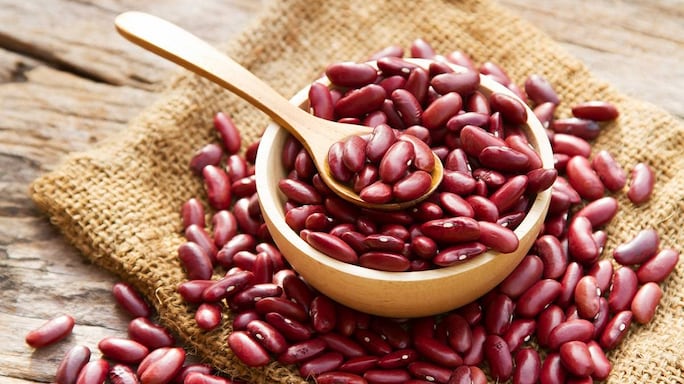- HOME
- /
- Better Living
- /
- Food
- /
Go Beyond The Usual Rajma Chawal To Make Full Use Of This Legume
With a distinct flavour and a wonderful texture, kidney beans are a versatile health-packed food
 Photo: Shutterstock
Photo: Shutterstock
Called kidney beans (rajma) because of their shape and colour, this humble legume has been a staple in North India for centuries. Today, it’s become one of the most popular foods in the country.
Other than having a lovely texture and taste, this nutrition-packed bean has numerous health benefits too. Here’s why you should be experimenting with rajma more:
1. Red kidney beans (Phaseolus vulgaris) are a part of a larger group called common beans which were cultivated as early as 8,000 years ago. While it’s said to have originated in Peru, it is an important food crop and a major source of protein throughout the world. It is said that kidney beans were brought to Europe and Africa during the 16th century by Spanish and Portuguese explorers.
2. The colour of kidney beans ranges all the way from a light hue of pink (fresh colour) to a deep red to an almost maroon. Rich in polyphenols that are packed with antioxidants, they potentially have anti-diabetic, anti-obesity, anti-inflammatory and anti-carcinogenic properties. Rajma is also one of the richest plant-based sources of protein and unlike animal proteins, it’s low in fat and full of fibre and nutrients. It’s very affordable too, which makes it an accessible and fulfilling food for everyone.
3. As per the book Genetic and Genomic Resources of Grain Legume Improvement, 2013, this legume is not only “the centrepiece of the daily diet of more than 300 million people across the world” but also “far ahead of other legumes.” The book further adds, “Nutritionists characterize the common bean as a nearly perfect food, because of its high protein content and high amounts of fibre, complex carbohydrates and other dietary elements.”
4. Other than providing fibre and protein, kidney beans are also packed with essential nutrients such as folate, vitamin C, magnesium, manganese, iron, copper, zinc and phosphorus that are important for the proper functioning of the nervous system, muscular function, regulating blood pressure, cognitive function, bone and teeth health, and more.
5. These low-fat legumes are “practically free of saturated fat, and because they are plant foods, they are cholesterol-free as well. One serving of legumes, which is one-half cup, provides about 115 calories, 20 grams of carbohydrate, 7 to 9 grams of fibre, 8 grams of protein, and 1 gram of fat,” says an article in the journal Clinical Diabetes.
6. Kidney beans are rich in complex carbohydrates (such as dietary fibre), which are digested more slowly thereby making them a low glycaemic index food. As a result, they keep you feeling full for longer. They also help regulate plasma glucose and insulin levels after meals. They not only help people suffering from diabetes but also those looking to lose or maintain weight.






